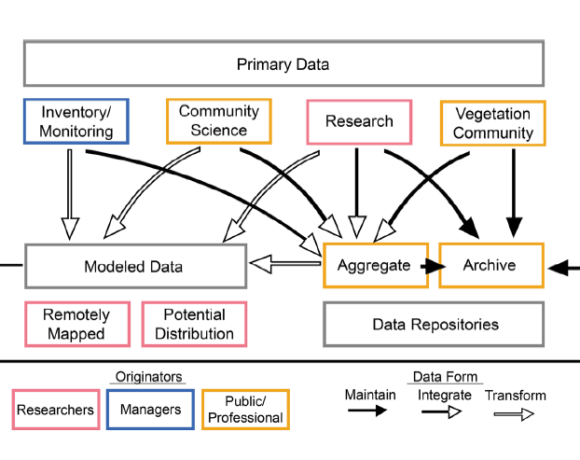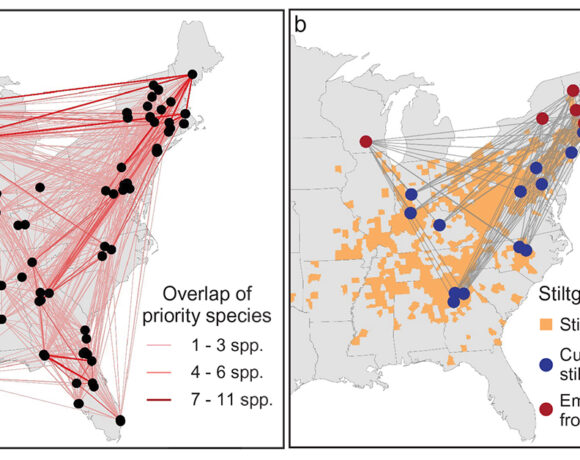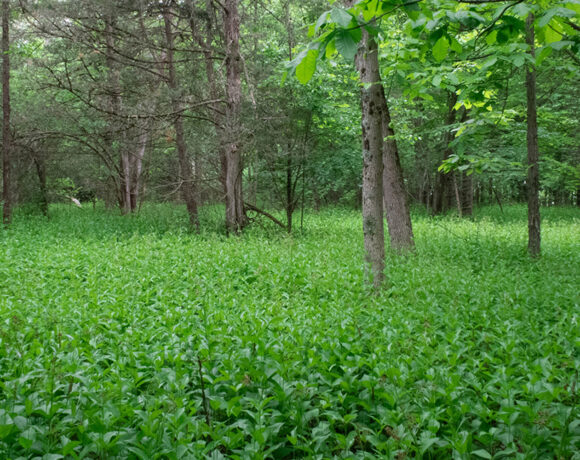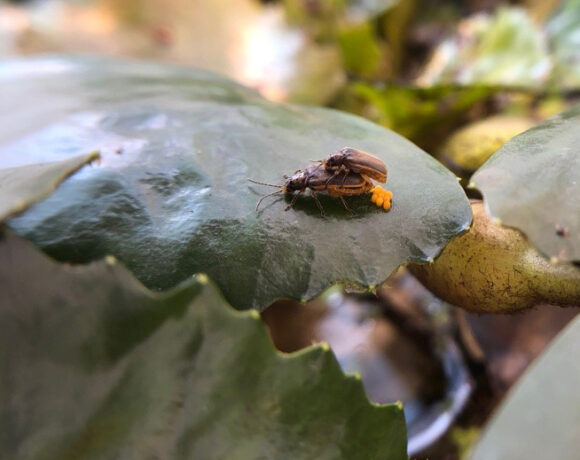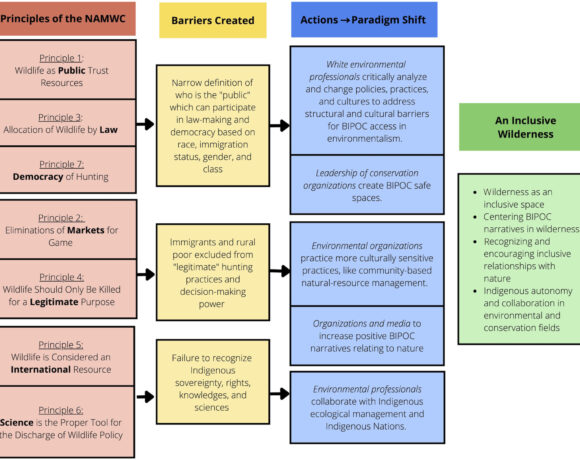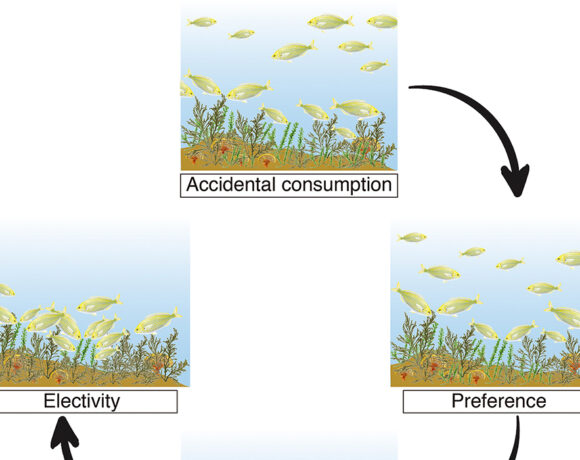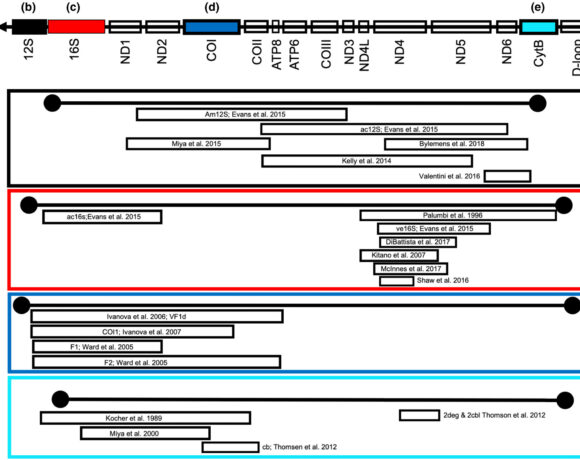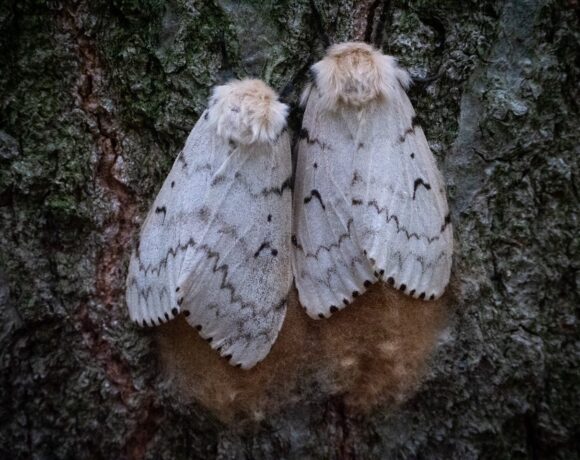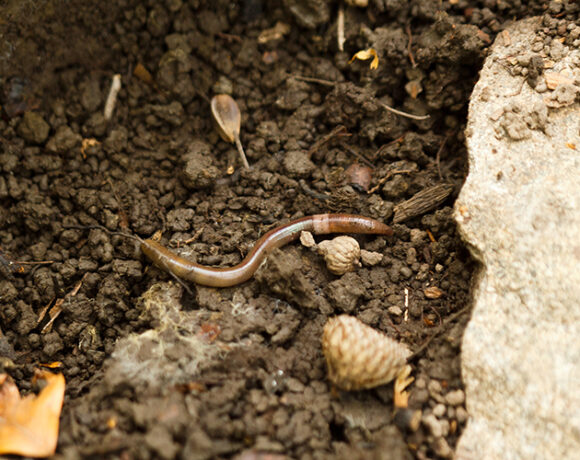Peering into predictors at the spongy moth invasion front
Metz, R., Tobin, P.C. Effects of temperature and host plant fragmentation on Lymantria dispar population growth along its expanding population front. Biol Invasions 24, 2679–2691 (2022). https://doi.org/10.1007/s10530-022-02804-8
Summary written by Justin Dalaba, edited by Audrey Bowe
Shifting temperature regimes can influence the suitability and spread of invasive insects like Lymantria dispar (spongy moth). However, the role of secondary host plants in supporting L. dispar expansion across the U.S. has received little research attention, until now.
Summary
With projected temperature shifts in a changing climate, the distributions of native and invasive insects are expected to shift as well. In this study, Metz and Tobin highlight how geographical differences in temperature and host plant fragmentation may affect Lymantria dispar (spongy moth, formerly gypsy moth) growth rates along the expanding invasion front. Growth rates for L. dispar were derived from monitoring data collected by Slow-the-Spread, a program which has extensively monitored the population front from Minnesota to North Carolina using ~100,000 georeferenced traps. Temperature data were obtained through the PRISM Climate Group, using daily minimum January and mean daily maximum July temps. U.S. Forest Service inventory data from private and federal lands helped quantify the mean amount of area occupied by tree stems within each study region. They used the spatial modeling software, FRAGSTATS 3.3., to estimate connectivity across the landscape (mean patch cohesion) for primary and secondary host plants. Secondary host plants differ from primary hosts in that they can generally only be consumed by later instars. Overall, they found mean growth rates were highest in the Northern region and lowest in the Midwestern region. Temperature was the main predictor for lower growth rates in the Midwestern region, where colder overwintering conditions are likely. Secondary host species cohesion and its interaction with primary host species cohesion significantly predicted growth rates in the Northern region, emphasizing the importance of reduced fragmentation in the invasion of L. dispar. In the Southern region, they observed higher L. dispar growth rates as both primary and secondary host plant cohesion increased.
Key take-aways:
- From 16 years of spatially-referenced data, this study found the highest L. dispar growth rates when minimum January temperatures were > -10 °C and July temps between 27-30 °C
- Warming winter temperatures in the Northern region will likely further increase the speed and growth of L. dispar invasion, which is particularly concerning for regions previously considered climatically unsuitable
- In the Northern and Southern regions, they detected higher growth rates when there was less fragmentation (higher cohesion) of both primary and secondary host plants
- In the Midwest region where there is a lower density of host plants, L. dispar growth rates would decrease with low January temperatures and high temperatures in July
Recommendations:
- Host plant availability is key to incorporate in risk models when predicting establishment of invasive species
- Rather than focusing solely on host plant density, including host plant cohesion, a measure of connectivity, as a factor in risk models could improve predictive capability of risk assessment models for herbivorous invasive insects
- Better understanding predictors of population spread can help managers prepare for the growth of invasive insect populations under shifting climatic suitability



